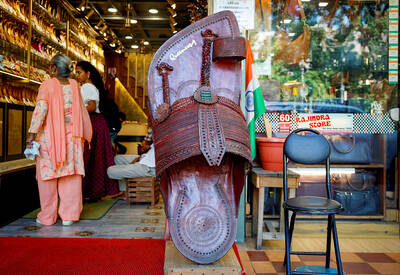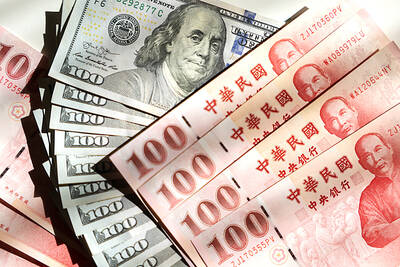Vietnam’s skies are about to get more crowded.
With state-owned Vietnam Airlines JSC and budget carrier VietJet Aviation JSC serving one of the world’s busiest routes, property developer FLC Group JSC wants a piece of the action with a new airline, operating 37 routes in the country after its inaugural flight in October.
Called Bamboo Airways, the new airline still needs a government aviation license before operating and is seeking to capitalize on the nation’s growing middle class and rapidly expanding tourism industry.
The International Air Transport Association (IATA) has forecast Vietnam would be among the world’s top five fastest-growing air travel markets in the next 20 years.
The route between Hanoi and Ho Chi Minh City was already the world’s sixth-busiest in terms of passenger numbers last year, according to IATA.
The aviation industry handled 23.6 million passengers during the first half of this year, a 15 percent increase from the same period last year, according to the Vietnamese General Statistics Office.
“With a good investment, well-prepared staff and new aircraft, we will become a giant right after we launch the airline,” FLC Group chairman Trinh Van Quyet said in an interview in his Hanoi office.
The Civil Aviation Authority of Vietnam said the company has met “sufficient conditions” required to be able to fly in October and the flight license is forthcoming, he added.
Bamboo Airways’ proposal is being reviewed, a Vietnamese Ministry of Transport official said.
Still, the new airline might struggle to crack Vietnam’s aviation market, which also includes Vietnam Airlines’ budget carrier unit and joint venture with Jetstar Pacific.
“Anybody coming into the market now is late,” said Brendan Sobie, a Singapore-based analyst at the CAPA Center for Aviation. “You have a domestic market becoming saturated. The international market will probably slow down in a couple of years.”
Vietnam’s annual domestic seat capacity growth has slowed to single digits in the past 18 months after posting increases well above 20 percent annually the four prior years, Sobie said.
International seat capacity growth is accelerating, reaching about 20 percent a year in the past three years, he said.
Vietnam’s growing middle class and the government’s efforts to make tourism a major industry will be enough to create room for the new carrier to succeed, Quyet said.
Bamboo Airways would initially use 20 leased narrow-body and wide-body aircraft, he added.
Parent FLC Group agreed to buy 24 Airbus SE A321neo aircraft worth US$3.2 billion at list price for Bamboo Airways.

MARKET LEADERSHIP: Investors are flocking to Nvidia, drawn by the company’s long-term fundamntals, dominant position in the AI sector, and pricing and margin power Two years after Nvidia Corp made history by becoming the first chipmaker to achieve a US$1 trillion market capitalization, an even more remarkable milestone is within its grasp: becoming the first company to reach US$4 trillion. After the emergence of China’s DeepSeek (深度求索) sent the stock plunging earlier this year and stoked concerns that outlays on artificial intelligence (AI) infrastructure were set to slow, Nvidia shares have rallied back to a record. The company’s biggest customers remain full steam ahead on spending, much of which is flowing to its computing systems. Microsoft Corp, Meta Platforms Inc, Amazon.com Inc and Alphabet Inc are

Luxury fashion powerhouse Prada SpA has acknowledged the ancient Indian roots of its new sandal design after the debut of the open-toe footwear sparked a furor among Indian artisans and politicians thousands of miles from the catwalk in Italy. Images from Prada’s fashion show in Milan last weekend showed models wearing leather sandals with a braided design that resembled handmade Kolhapuri slippers with designs dating back to the 12th century. A wave of criticism in the media and from lawmakers followed over the Italian brand’s lack of public acknowledgement of the Indian sandal design, which is named after a city in the

The US overtaking China as Taiwan’s top export destination could boost industrial development and wage growth, given the US is a high-income economy, an economist said yesterday. However, Taiwan still needs to diversify its export markets due to the unpredictability of US President Donald Trump’s administration, said Chiou Jiunn-rong (邱俊榮), an economics professor at National Central University. Taiwan’s exports soared to a record US$51.74 billion last month, driven by strong demand for artificial intelligence (AI) products and continued orders, with information and communication technology (ICT) and audio/video products leading all sectors. The US reclaimed its position as Taiwan’s top export market, accounting for

INVESTOR RESILIENCE? An analyst said that despite near-term pressures, foreign investors tend to view NT dollar strength as a positive signal for valuation multiples Morgan Stanley has flagged a potential 10 percent revenue decline for Taiwan’s tech hardware sector this year, as a sharp appreciation of the New Taiwan dollar begins to dent the earnings power of major exporters. In what appears to be the first such warning from a major foreign brokerage, the US investment bank said the currency’s strength — fueled by foreign capital inflows and expectations of US interest rate cuts — is compressing profit margins for manufacturers with heavy exposure to US dollar-denominated revenues. The local currency has surged about 10 percent against the greenback over the past quarter and yesterday breached